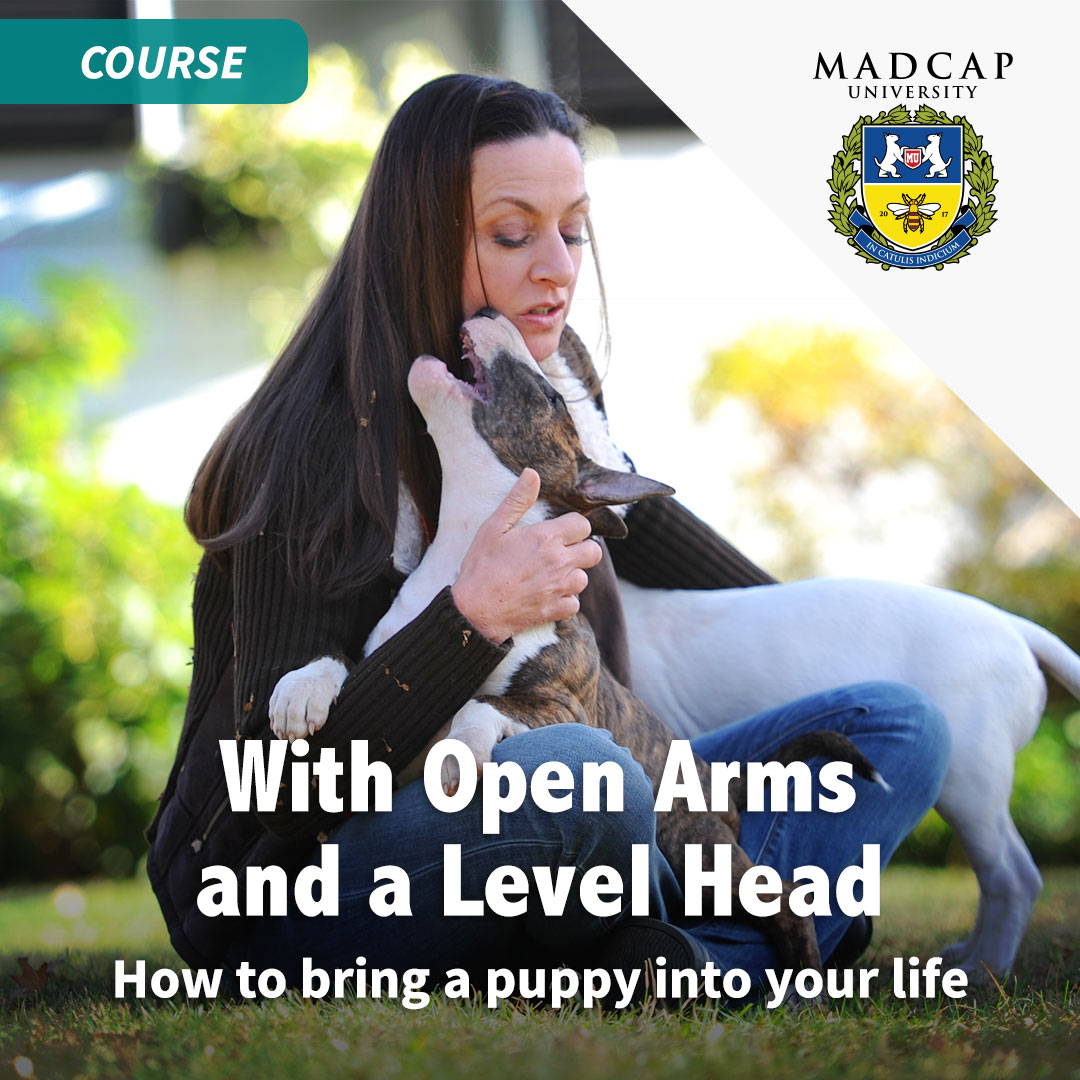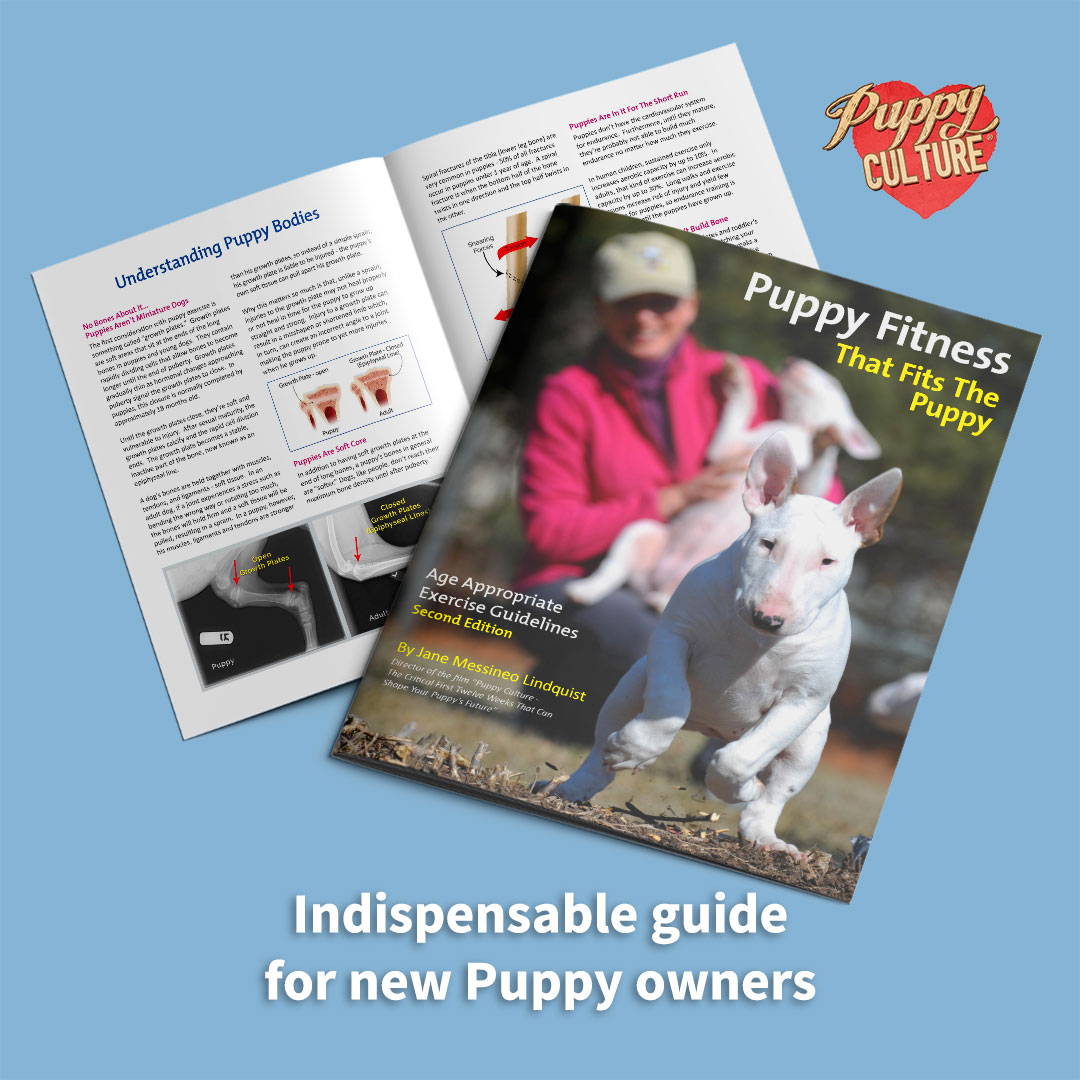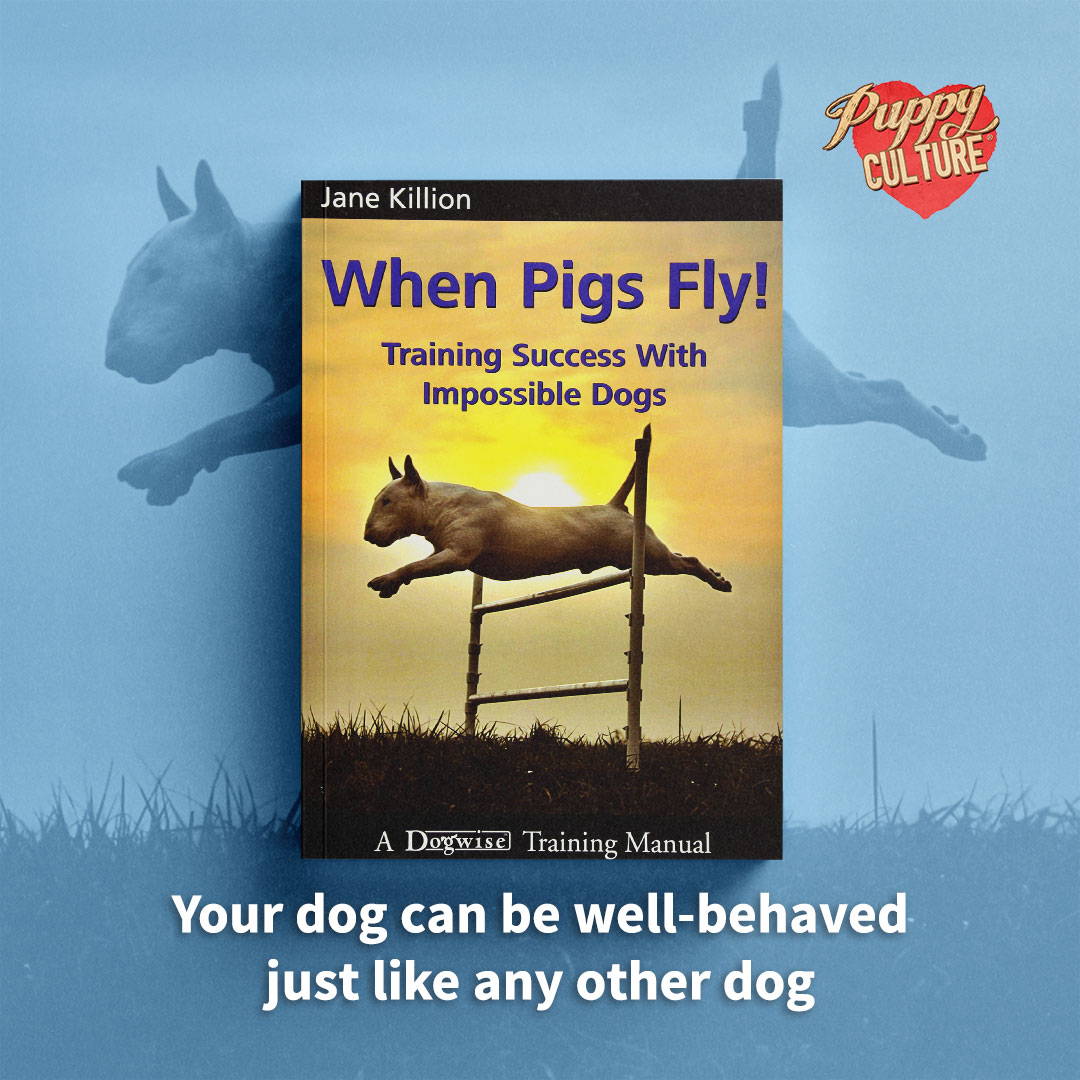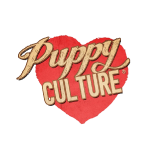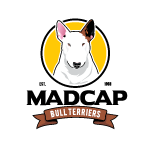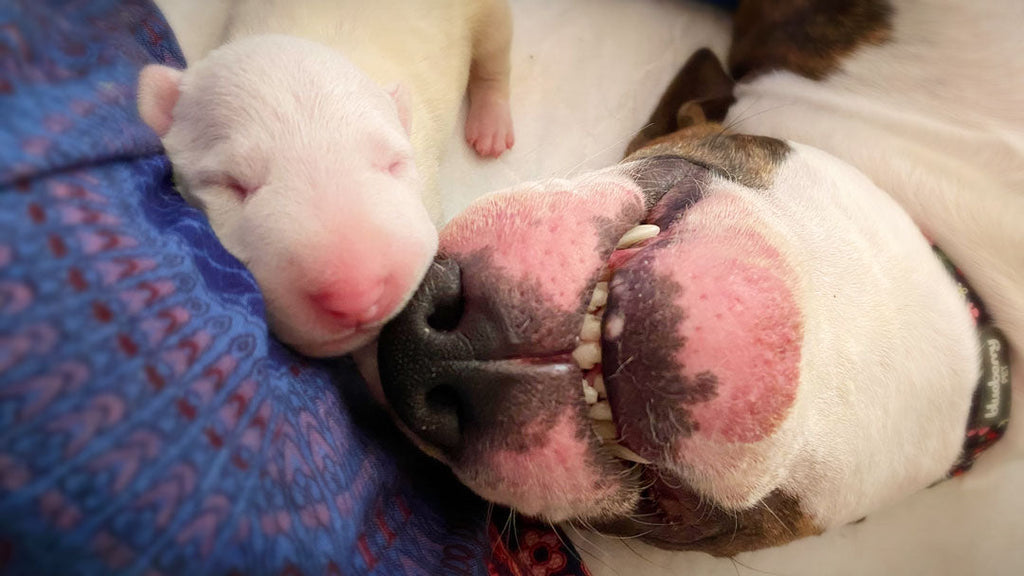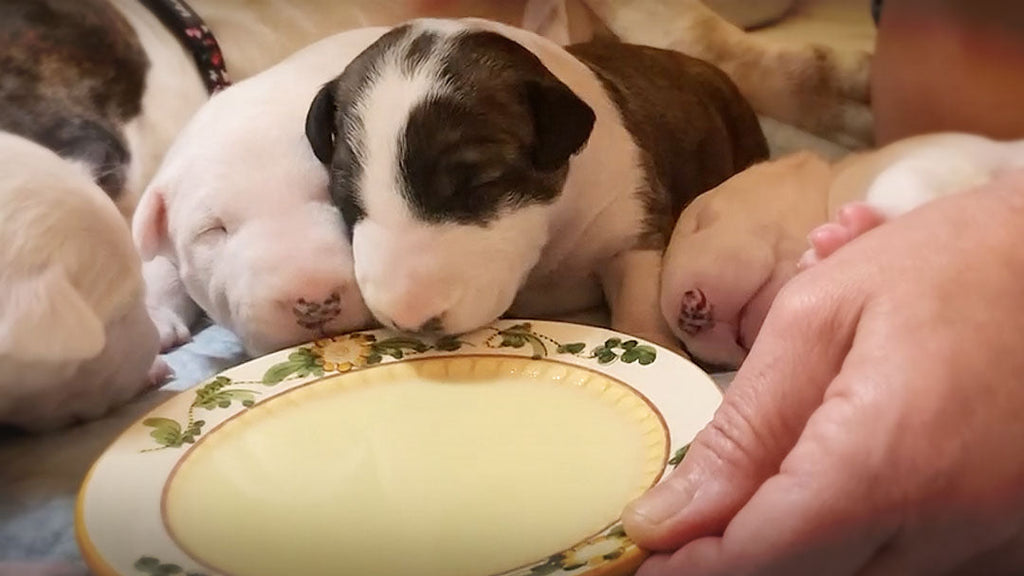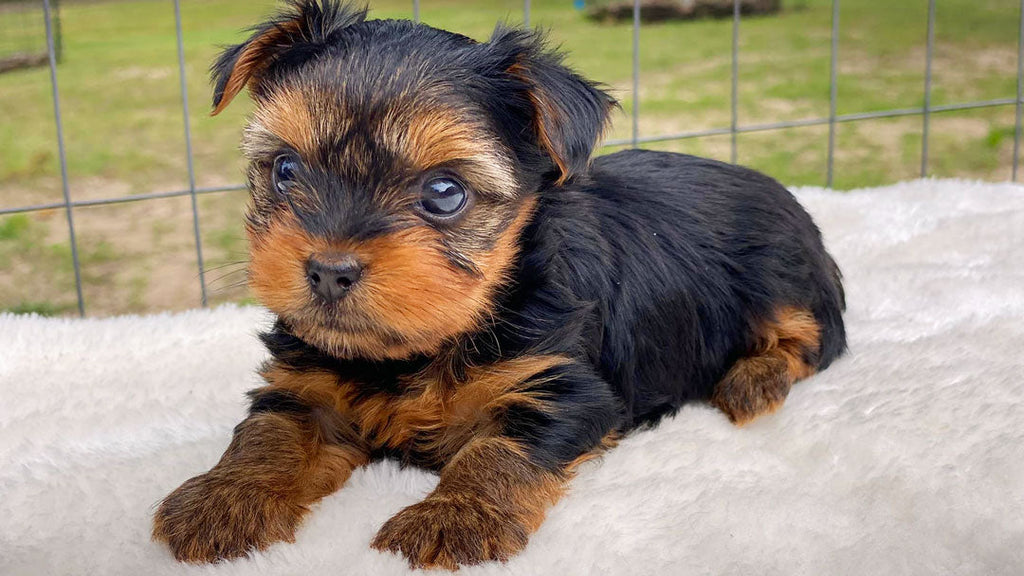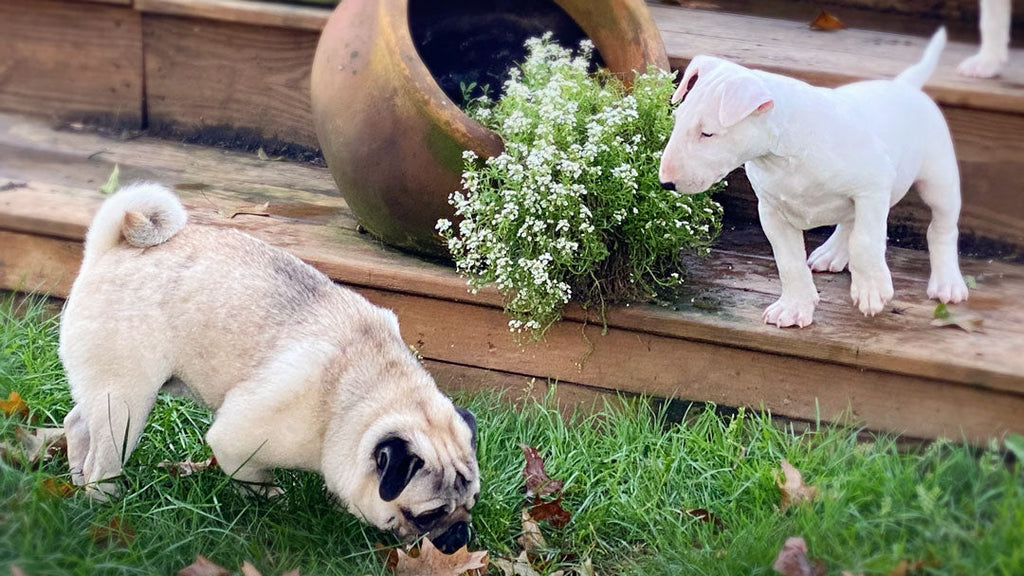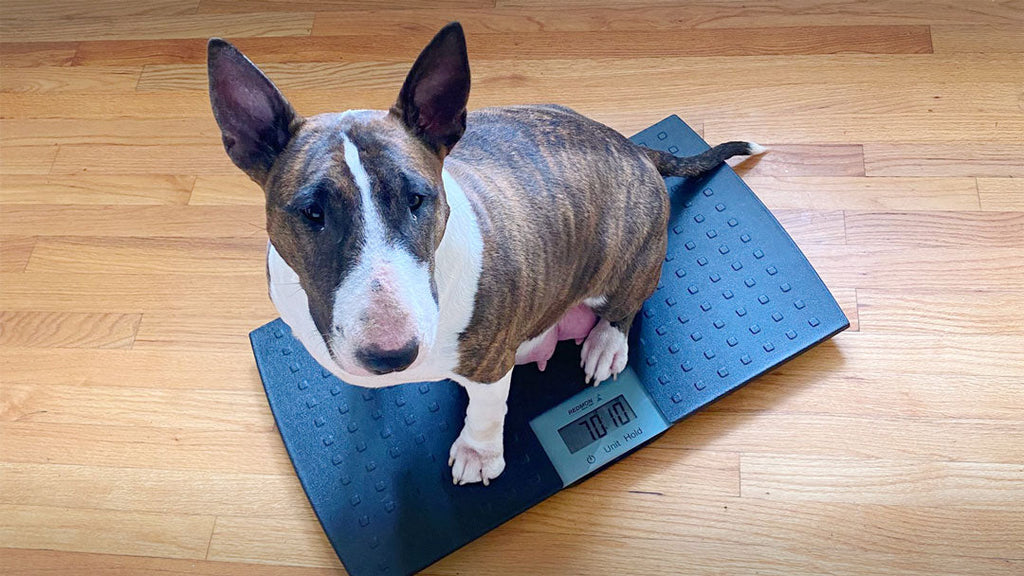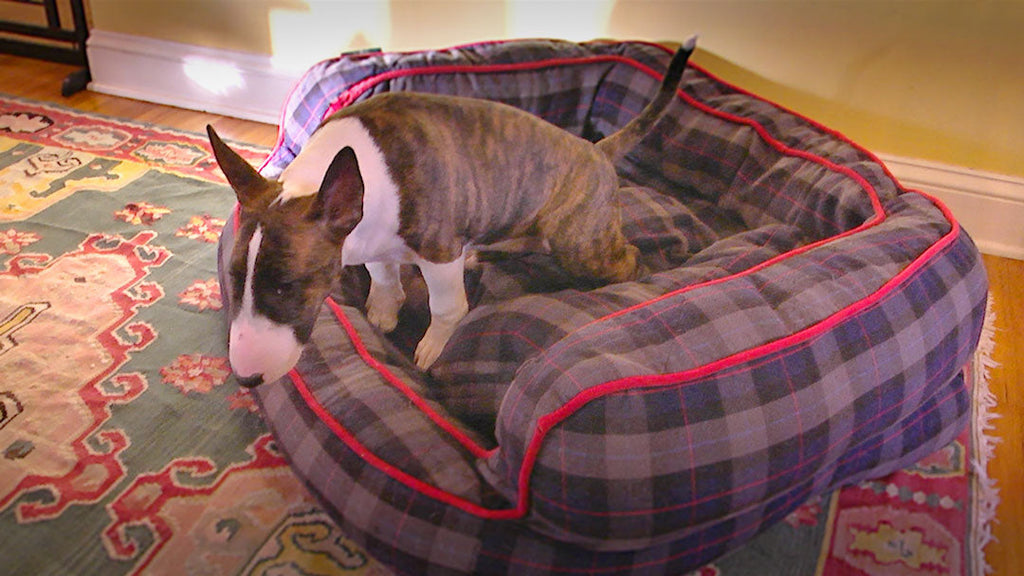Having Trouble Walking Your Puppy?
Try Less Skinner and More Darwin.
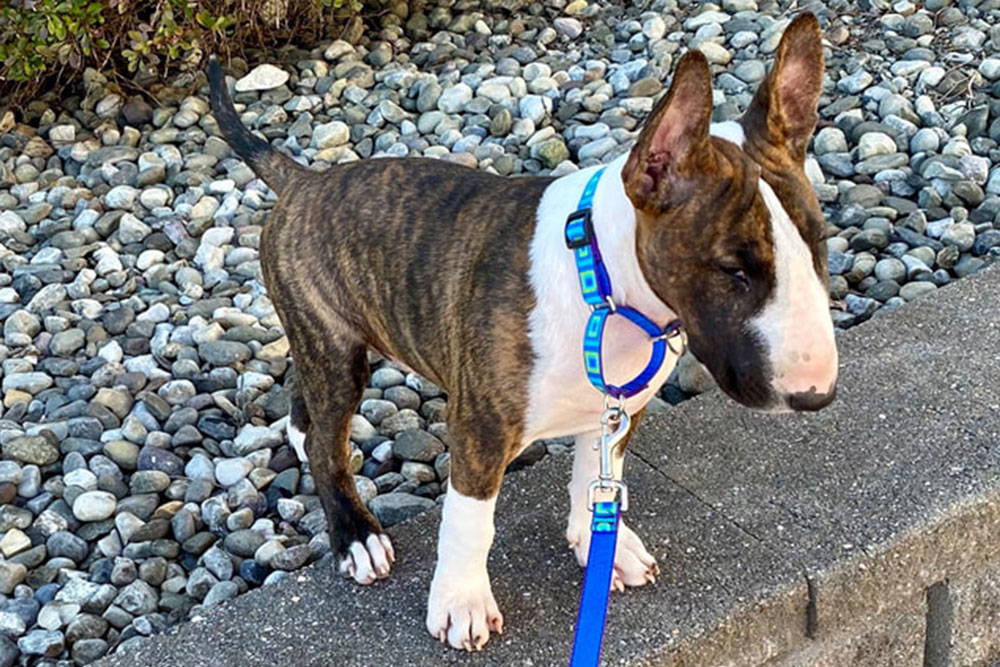
“Help! My puppy won’t go for a walk! He goes like three steps and then he stops and sniffs or won’t move, then he bites the leash. What's wrong with my puppy?”
The answer is simple...but the problem is more complex. You can explain the mechanics of how to teach loose leash walking any way you like, the real trouble is that the puppy owner and the puppy are often at odds as to what a “walk” means to them, and that disagreement is firmly rooted in evolution.
This is an "Evolved" Question
Dogs and humans have different evolutionary strategies. Humans evolved to be bipedal (walk on two legs). This gave us the advantages of freeing up our arms and hands to do things like pick fruit and carry weapons, and also gave us the ability to see far across the savanna to both find prey and avoid predators. Walking while looking around is sort of our signature move as a species.
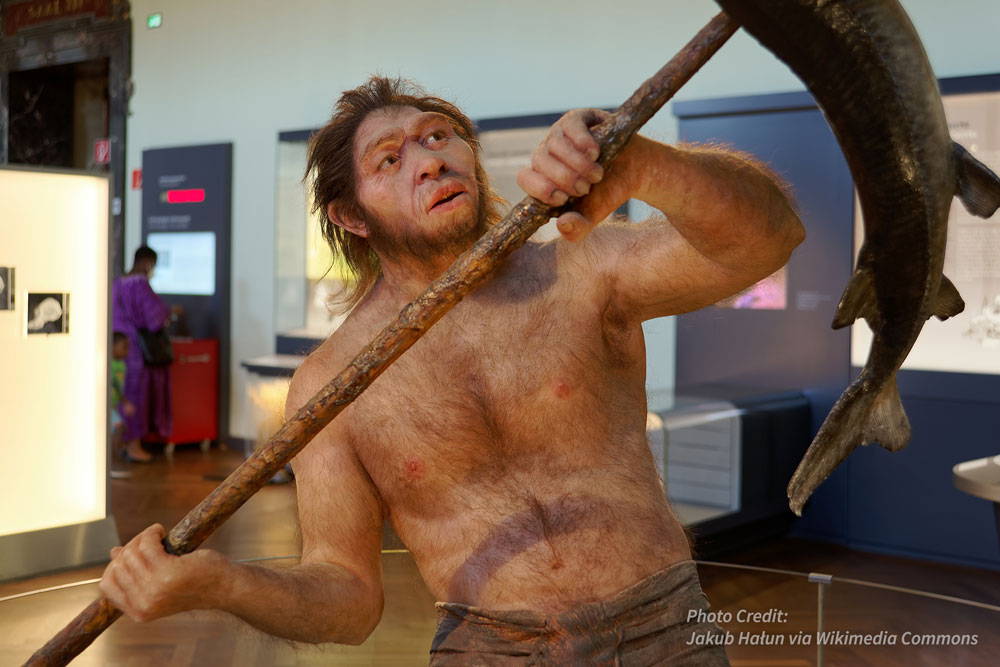
Homo Erectus was the first hominid to walk upright which freed up our hands and gave us the ability to do cool stuff like use weapons and tools. Also brought us not-cool lower back pain.
Dogs, on the other hand, rely primarily on smell to navigate their world. I really mean it, to dogs, humans are blind because dogs “see” their entire world through smell. To start with, dogs have 300 million scent receptors vs the paltry 5-6 million that humans have. They’ve got a much larger relative brain share devoted to smell, and their entire olfactory system has features and abilities that we completely lack. Dogs can detect odor in parts per trillion. Yes, that’s trillion, with a T. Read more about the remarkable scent abilities of dogs here.
Puppies and young will ignore something that is visually right in front of them and follow a scent plume that carries them away for something. In our observation, puppies pretty much ignore what they see (or at least don’t recognize it) and actually have to learn to use visual information to supplement the primary information they are getting from their noses. Watch the puppy in this video find the treats plainly visible in front of him - even when he is only an inch away from the food, he's clearly using his nose to find it:
(Excerpt from our Newborn to New Home course for breeders)
So, right there, humans and dogs are at odds when it comes to the deep need that is satisfied when we “take a walk” together. We’re trying to satisfy the need to walk and look around, and dogs are trying to satisfy the need to sniff and explore.
Can We Compromise?
Having a dog to walk has been shown to have positive effects on human health and happiness, so there’s every reason that, eventually, it’s great to train dogs to do this activity. Also, most puppies will grow to a size that you can’t easily pick them up and carry them, so they do need eventually to learn “Point A to Point B” walking. This is part of the core curriculum of our puppy course. But I think it’s helpful for puppy owners to understand that the “walk” part of the walk is really more for you than the puppy. What the puppy needs to do is sniff and explore. Stop and go as he pleases. Sometimes just stand there and smell the air.
We humans in general project human feelings onto our dogs, and our current culture has turned the volume way up on this. Sometimes that’s good for dogs because it means we use more humane methods to train and care about enriching their lives. But sometimes it’s bad for them because we miss what our dogs are actually feeling and what they actually need.
So, when you ask, what's wrong with your puppy who won’t walk, wants to sniff, and grabs the leash in his mouth, the answer is, nothing at all <3.
A Fair Walk
Here is a video of a walk I took with my 16-week-old puppy. You can see I’m following him for the most part. When I really need him to move along, he has the skills to do that for a few steps. This is a reasonable goal for a “walk” with a puppy this age.
I know that is two minutes of brutally boring video that very few people will watch because, well, it looks like not much of interest is happening. But if you skip from place to place in the video, you'll see that EVERY SECOND of it, the puppy is sniffing. Sniffing the ground, sniffing the air, sniffing plants. His little legs are moving, but really only to carry him to the next interesting scent. So, to the puppy, what's going on in this film is about as interesting as it gets.
The most constructive action item I can give you is to watch closely and observe how much your puppy enjoys sniffing and how much it satisfies his soul, and it will gradually become more interesting for you, too. Over time, your puppy will learn how to enjoy walking with you more, and you will learn how to enjoy watching him sniff more, and you'll come to a happy place where the walk is equally enriching and enjoyable for both of you.
How Do I Know What's Fair for MY Puppy
We addressed this topic in our puppy exercise booklet but I would like to give you an additional rule of thumb. When your puppy is loose in the backyard, watch him moving around and take note of how far he will continually trot until stopping to noodle around, play, or sniff. Whatever that amount is, is a good guideline for how far you can reasonably and safely expect your puppy to “walk” at a time. When I say “walk” I mean continually in a straight line next to you. You can cover a lot more ground, but do it in segments, giving the puppy a chance to satisfy HIS need of investigating the world through his nose <3.
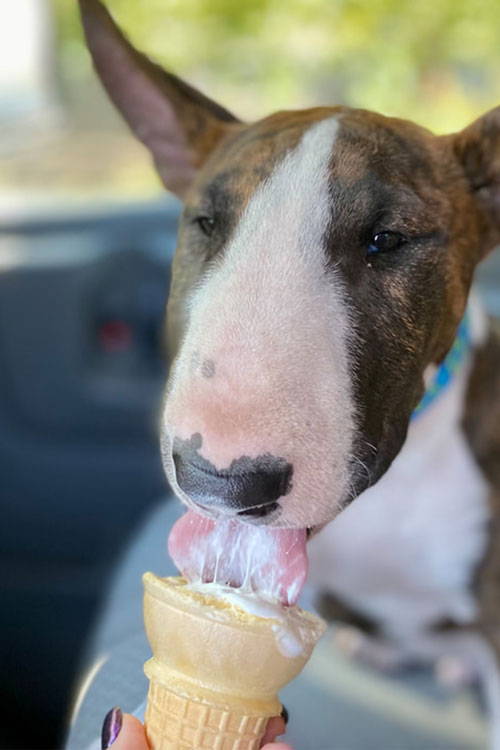
I recommend ice cream after your walks. Just because.

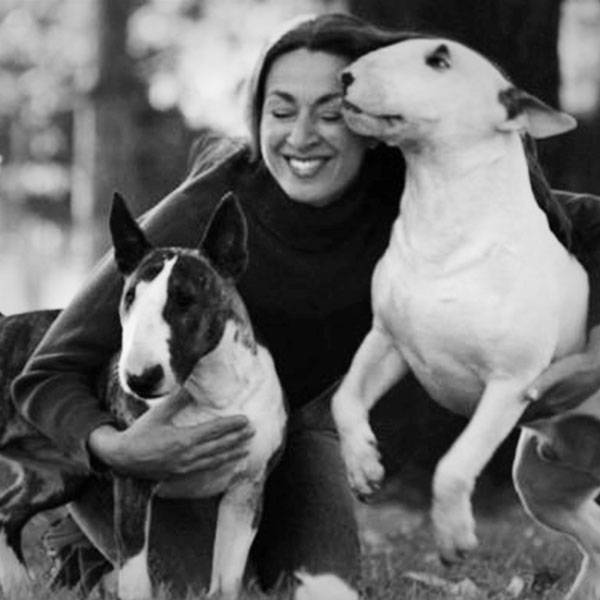
About the Author
Jane Messineo Lindquist (Killion) is the director of "Puppy Culture the Powerful First Twelve Weeks That Can Shape Your Puppies' Future" as well as the author of "When Pigs Fly: Training Success With Impossible Dogs" and founder of Madcap University.
Jane has had Bull Terriers since 1982 and she and her husband, Mark Lindquist, breed Bull Terriers under the Madcap kennel name.
Her interests include dog shows, dog agility, gardening, and any cocktail that involves an infused simple syrup.

